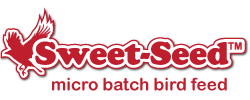Making a pine cone bird feeder is a fun and easy project for bird lovers of all ages, and it's a fast and inexpensive way to add more feeders to the backyard. Once birds discover these simple feeders, you won't be able to make enough to keep up with their appetites!
What You Need
Pine cone bird feeders don't require special tools or crafty skills, but it is best to gather all the materials together before you begin.
- Pine Cone: The best cones will be relatively large and open to hold more food for birds. Do not use any craft cones that have scents, glitter or other accents on them, all of which can be harmful to birds.
- String: A length of string, yarn, ribbon or twine is needed to hang your feeder. The string should be 8-15 inches long for the best results. Do not use very fine thread or fishing line, which can cause tangles that may injure birds.
- Peanut Butter: Either creamy or crunchy peanut butter can be used, and any brand name or generic is suitable. Avoid low sugar varieties, however, which do not offer birds as much nutrition. The peanut butter can be past its best by date, but should not be rancid. If peanut butter is not available, lard, suet or vegetable shortening can be used instead.
- Seed: Any birdseed can be added to the feeder, including sunflower seeds, mixed seed, bits of fruit, pieces of nuts or even mealworms. Choose the seeds that are most popular in your yard for the best results.
- Spreader: You will need a butter knife or similar utensil to spread the peanut butter on the pine cone. If children will be helping with the project, be sure the spreader is safe for them to use.
- Shallow Plate: A pie tin, casserole dish or similar shallow plate will help keep the project cleaner and easier when it is time to add the seed to the cone.
To Make Your Feeder
Whether you're making one feeder at a time or enough to feed an entire flock, the process is simple.
- Clean the Cone:
Gently brush any excess dirt or debris off the pine cone to help the peanut butter stick better. If the cone is tightly closed, put it in a warm oven for a few minutes to help it open, but allow it to cool before proceeding.
- Tie the String
: It is easiest to tie the hanging string around the pine cone before adding the sticky peanut butter. Make sure the cone is secured firmly, and leave enough excess string so it can be easily hung from a hook or branch.
- Spread the Peanut Butter
: Coat the pine cone with a medium-thick layer of peanut butter, pushing some of the butter into larger gaps to fill up the cone. If the peanut butter or other gooey spread is too thick, heat it gently to help soften it, but do not overheat it or it will be too liquid to stick well.
- Roll the Cone in Seed
: Roll the coated pine cone in the birdseed, using the pie pan or shallow plate to keep it contained. Press the seed firmly into the peanut butter, and use other bits of fruit, raisins, nut pieces or other foods to decorate the cone even more if desired.
- Hang the Feeder:
Hang the feeder right away so birds can take advantage of the treat. If you've made several feeders at once but don't want to use them all immediately, extra pine cone bird feeders can be stored in baggies and frozen until they are needed. Feeders can be hung from shepherd's hooks, feeder poles, branches or anywhere birds will find them!
Once your pine cone bird feeder is ready for birds, you'll be amazed at how many different species love these simple treats. Chickadees, nuthatches, titmice, wrens, finches, sparrows and small woodpeckers may all sample the feeder, and other surprise visitors can also take a taste. As the feeders get more popular, you'll want to create an entire forest of pine cone feeders for your backyard flock!

